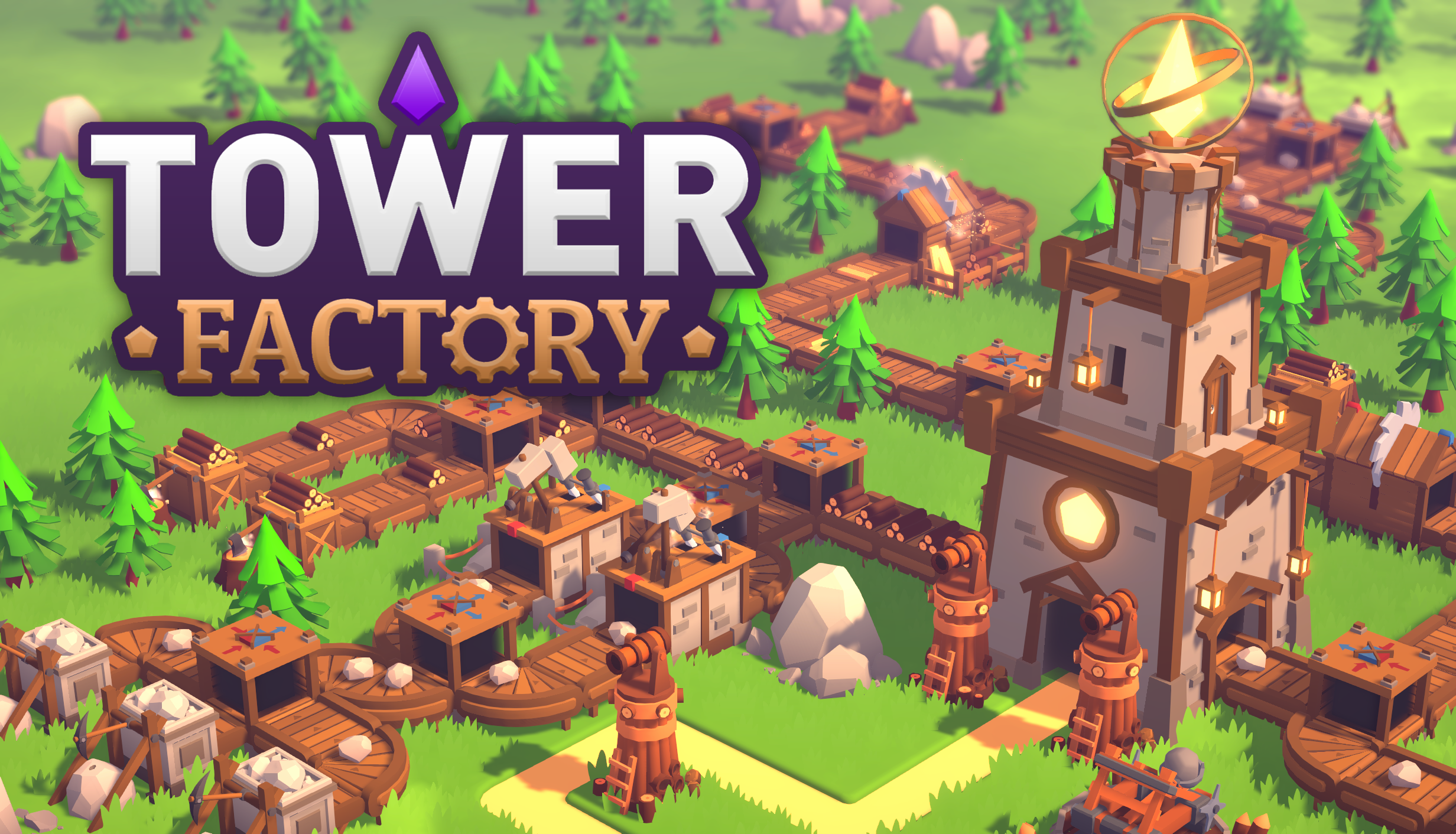
Tower Factory fuses tower defense, factory automation, and roguelite progression into a single, focused loop: design and tune a production line that churns out towers fast enough to repel relentless waves and, eventually, hunt down and destroy the enemy castle. It’s a game of systems thinking under pressure; conveyor networks, assembly stages, and resource throughput are as tactical as turret placement and firing arcs; so success comes from elegant layouts, clever compromises, and quick adaptation when plans meet chaos; watch the trailer here:
Core Loop and Mechanics
• Build and automate: Begin each run with rudimentary conveyors and production nodes, then grow a layered factory that converts raw ore into components, assembles tower modules, and batches finished defenses for deployment. Think modular lines, smart routing, and staged refinement rather than scattershot placement.
• Place and defend: Towers are your frontline decision; which models, where to position them, and when to queue upgrades. Placement patterns and complementary effects (slow + splash, beam + armor‑pierce) turn a handful of turrets into resilient kill‑zones.
• Resource flow is tactical: Conveyor layout, splitter priorities, buffer sizing, and throughput balance are tactical levers. A single clogged belt or misrouted input can cascade into empty build queues and failed nights, so diagnosing and smoothing bottlenecks is a constant task.
• Day/night tempo: Days are sandbox labs for expansion, optimization, and exploration; nights are high‑stakes stress tests where waves punish inefficiency. Your daylight choices; what to automate, what to scrap, where to expand; determine whether dawn brings progress or a funeral pyre of towers.
• Bosses reshape play: Each boss encounter introduces a rule or hazard that forces systems‑level thinking; new enemy behaviors, terrain hazards, or temporary debuffs that change which towers and factory layouts survive. Boss rewards unlock fresh mechanics that change subsequent runs, keeping strategies in flux.
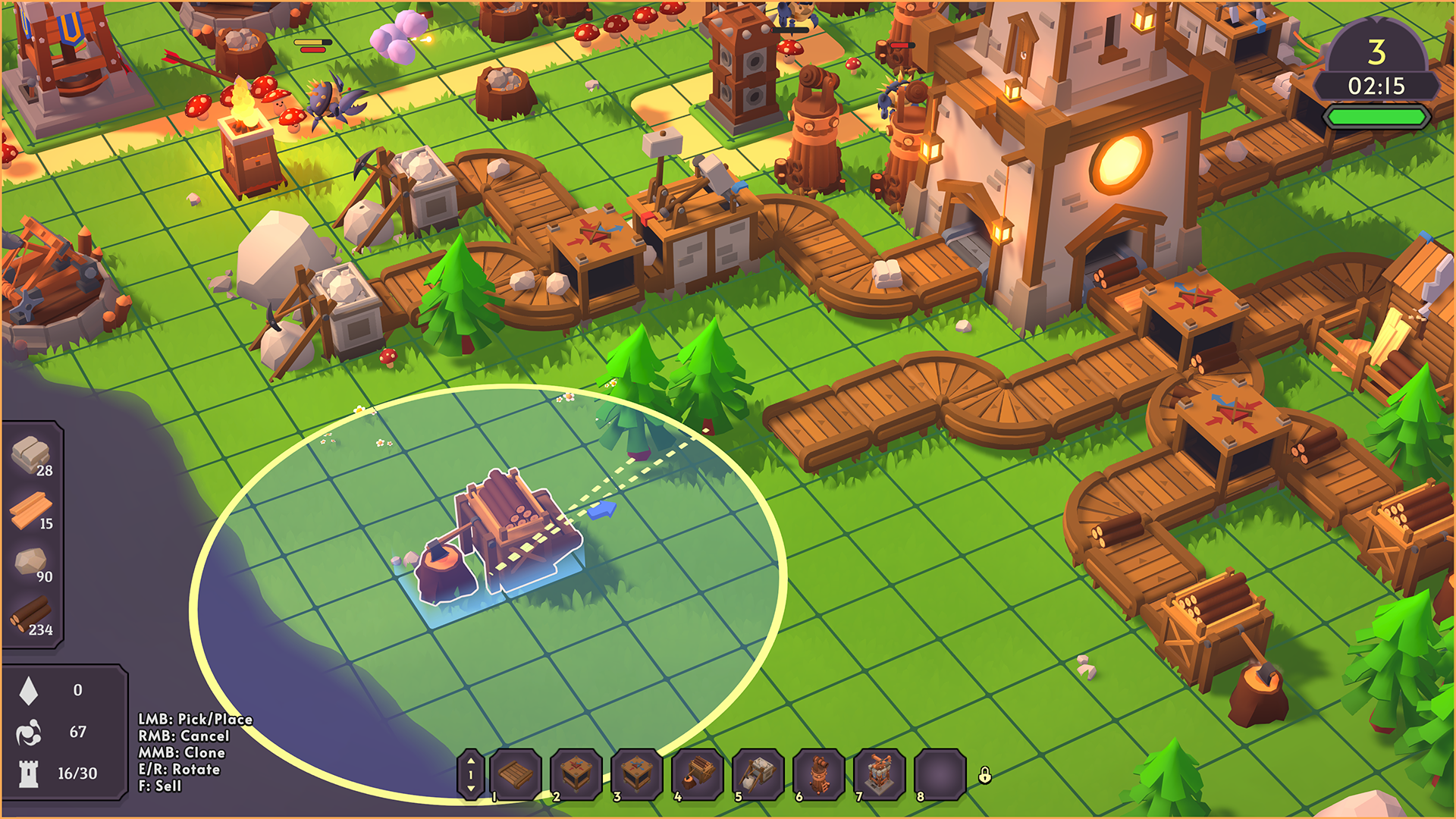
Progression and Replayability
• Roguelite metaprogression: Permanent upgrades, unlockable buildings, and new tower variants create a satisfying sense of growth across runs. Each unlock shifts the strategic palette, turning early conveyors into late‑game production hubs and enabling higher‑level strategies that feel earned rather than handed to you.
• Procedural variety: Procedurally generated maps scramble resource nodes, enemy paths, and castle placement so every run forces new layouts and tradeoffs. That unpredictability rewards flexible designs and punishes rote strategies, keeping exploration and map reading central to success.
• Early Access scope: The current build ships with six handcrafted levels mapped onto procedural layouts, six unique bosses that introduce fresh mechanics, 13 base towers and 26 upgraded variants, 20+ factory buildings, and 70+ metaprogression upgrades. Together these systems provide robust breadth for experimentation while more content and polish are added over time.
• High skill ceiling with occasional grind: Tower Factory rewards thoughtful optimization and inventive logistics: clever conveyor routing and modular factories can carry a run. Expect a steep skill ceiling; mastery is deeply satisfying; but also occasional late‑game friction as you hunt scarce resources to reach top tiers; this can feel grindy without targeted QoL and balance refinements.
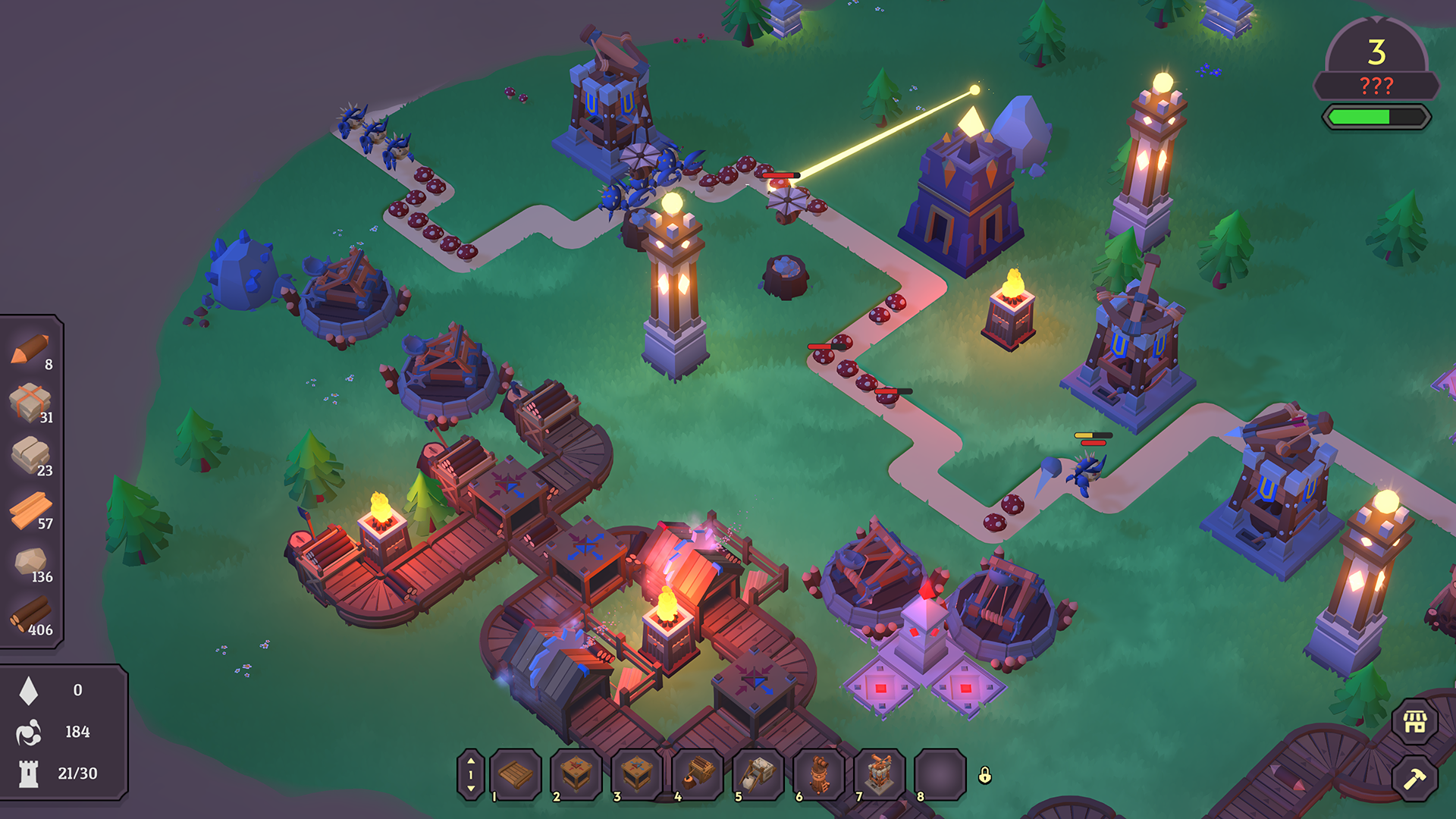
Visuals and Sound
• Functional clarity: Visuals are designed for instant readability; conveyors, splitters, and storage clearly contrast with the ground and each other; tower silhouettes and enemy silhouettes are visually distinct so you can identify threats and priorities at a glance. Clear color hierarchy and subtle outlines reduce visual noise while preserving the scale of sprawling factories.
• Satisfying feedback: Every system feels tactile; assembly animations show progress at each production stage, projectiles and impacts read with crisp timing, and destruction plays with weighty particles and camera shake. Diagnostic cues; overflow glows, belt stutters, and blinking buffer meters; make debugging fast and intuitively readable without breaking immersion.
• Sound design and rhythm: The audio supports systems play rather than competes with it: layered mechanical rhythms (conveyor thumps, gear clicks, welding sparks) create a productive hum while sharp impact and alert cues punctuate danger. A restrained musical bed adapts to tempo, rising during boss fights and receding during calm build phases to maintain focus and momentum.
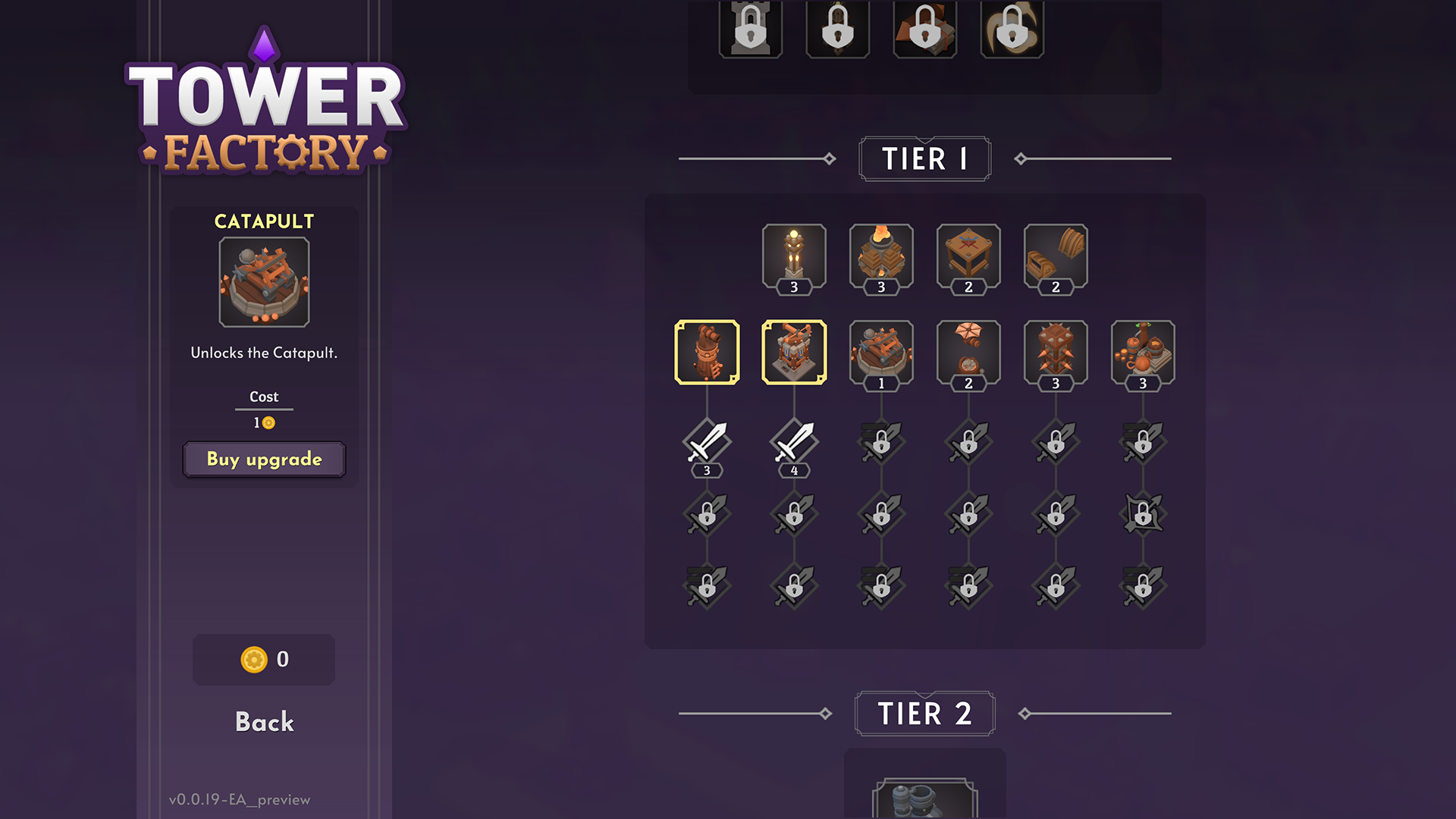
Strengths
• Deep systems fusion: Tower Factory marries factory automation and tower defense so player creativity matters: conveyor logic, production staging, and tower synergies create emergent solutions rather than rote builds.
• High replay value: Procedural maps, boss‑driven mechanical unlocks, and layered metaprogression reward repeated runs and steady discovery, turning each playthrough into a new puzzle.
• Meaningful mechanical evolution: Bosses don’t just gate power; they introduce new rules that reshape tactics, forcing players to adapt layouts and rethink long‑term strategy.
• Satisfying emergent moments: When systems click, an elegant assembly line feeding perfectly timed turret volleys, the game delivers genuine engineering joy and tense payoff during night waves.
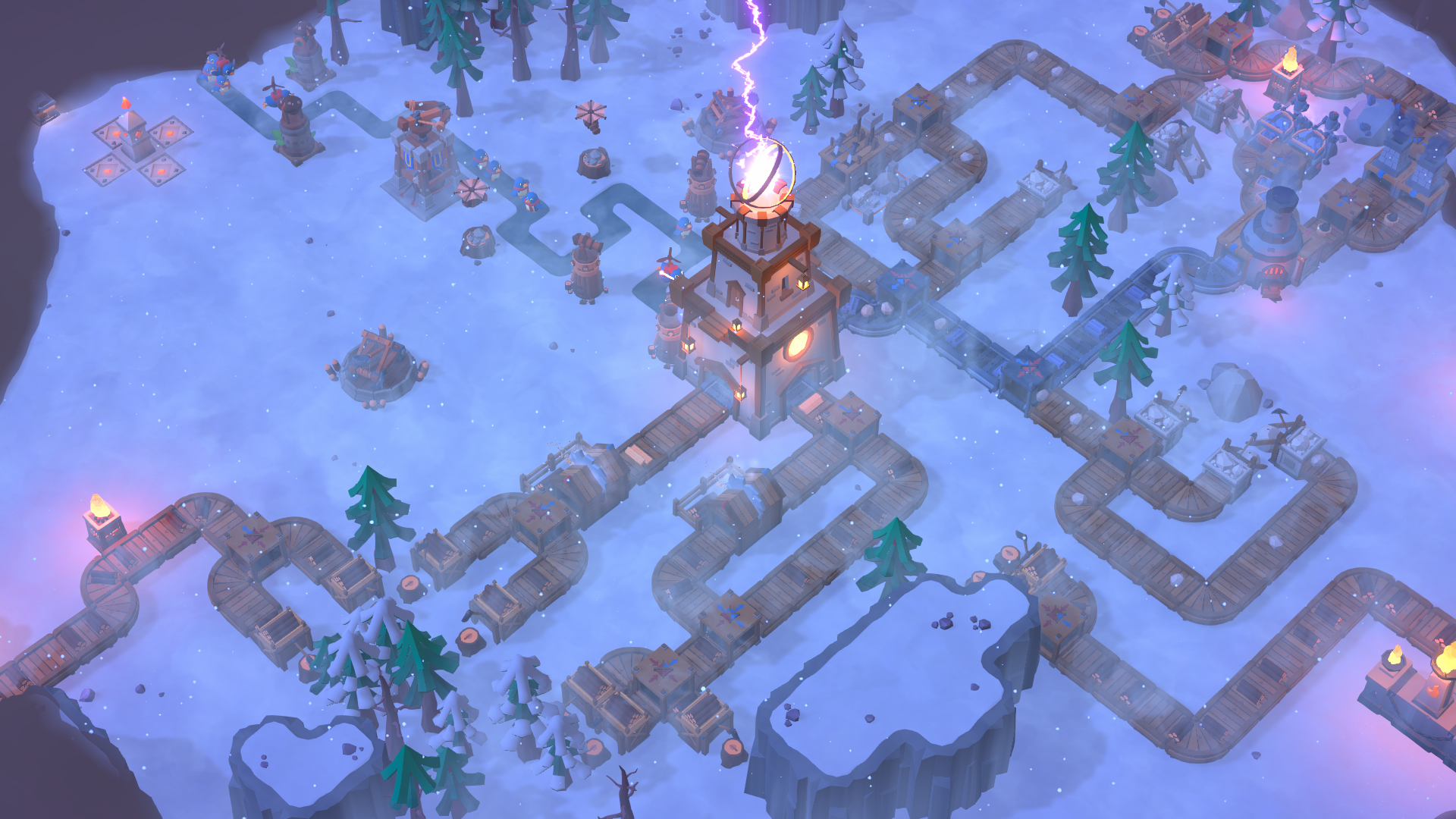
Weaknesses
• Late‑game pacing friction: Progression to top tiers can stall: rare resource gating and long searches make high‑tier builds feel like a slog rather than a skillful escalation.
• QoL and UI gaps: Managing large factories sometimes becomes tedious; better management tools (mass route edits, clearer throughput analytics, smarter auto‑balancers) would sharply improve the experience.
• Balance volatility: The same systems that enable brilliant emergent combos also create brittle runs; a single missing component or poorly placed production node can cascade into shutdowns that feel punishing rather than instructive.
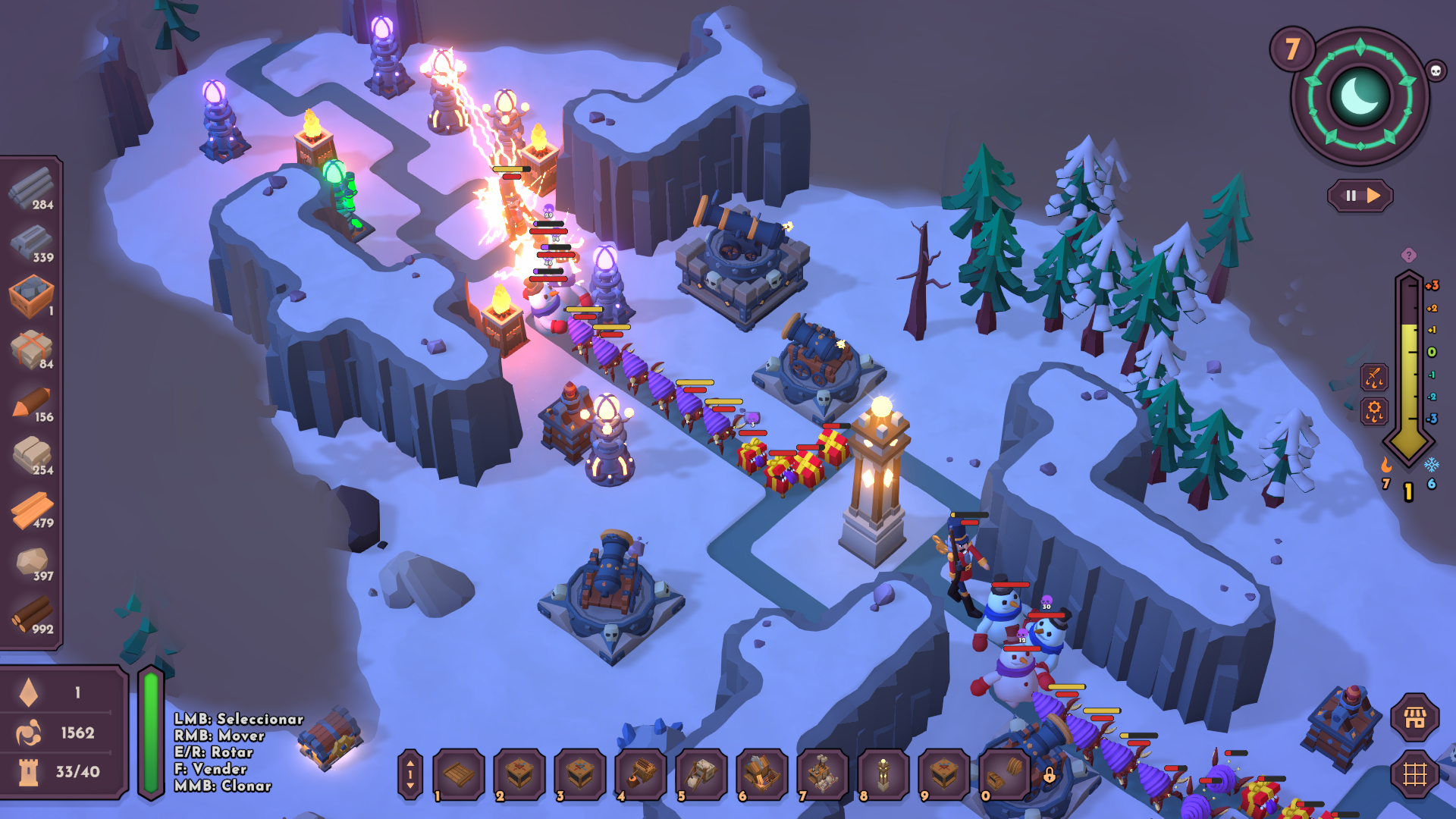
Final Verdict
Tower Factory shines for players who relish systems mastery under pressure, the satisfaction of sculpting efficient conveyor networks and watching turret arrays hum to life at night is consistently rewarding, and the roguelite metaprogression gives each run a tangible sense of forward momentum. It asks patience and a taste for iterative problem‑solving; late‑game grind appears at times; but when the systems click, the game delivers a playful, mechanical elegance that makes every defeat feel like a lesson and every victory feel earned.
Watch and Wishlist
• Add to your wishlist: Wishlist Tower Factory on Steam to get launch, patch, and sale notifications so you never miss major updates.
• Follow the developer: Follow Gius Caminiti for patch notes, Early Access roadmaps, and preview dev posts that explain new mechanics and balance changes.
• Watch curated playthroughs: Seek out tutorial and speedrun videos to learn conveyor tricks, factory layouts, and effective tower combos before you experiment on your own.
• Subscribe to maker content: Watch developer diaries and short build guides for design intent, optimal routing patterns, and boss strategies.
• Join community channels: Hop into Discord, Twitter, or Steam discussions to swap blueprints, post screenshots, share performance tips, and report bugs directly to the dev.
• Follow content creators: Look for creators who focus on logistics and factory sims; their let’s‑plays reveal practical QoL workarounds and creative late‑game setups.
Key Takeaways
• Core idea: Merge factory automation with tower defense to create towers at scale and defend against waves.
• Replay hook: Procedural maps, boss‑unlocked mechanics, and robust metaprogression.
• Unlock variety: 13 base towers and 26 upgraded versions offer diverse defensive strategies and combo potential.
• Factory depth: +20 factory buildings and conveyor systems enable complex production lines and optimization puzzles.
• Meta progression: +70 metaprogression upgrades ensure long‑term goals and meaningful power growth across runs.
• Procedural freshness: Procedurally generated maps keep exploration and castle placement unpredictable each play.
• Boss-driven evolution: Six unique bosses introduce new mechanics, reshaping strategies and forcing adaptation.
• Early Access tradeoffs: The current build delivers strong systems but still needs balance and QoL improvements to smooth late‑game pacing.
• Recommended for: Players who enjoy logistical problem‑solving, iterative design, and defensive strategy with a roguelite layer.
Game Information:
Developer & Publisher: Gius Caminiti
Platforms: PC - Steam (reviewed)
Release Date: November 7, 2024
Score: 8.0 / 10
Tower Factory is a satisfying mashup of factory automation and tower defense that rewards systems thinking and creative problem solving. Its core loop; designing production lines to churn out towers, then testing them against escalating waves; feels consistently engaging, and the roguelite metaprogression gives runs meaningful long‑term purpose.